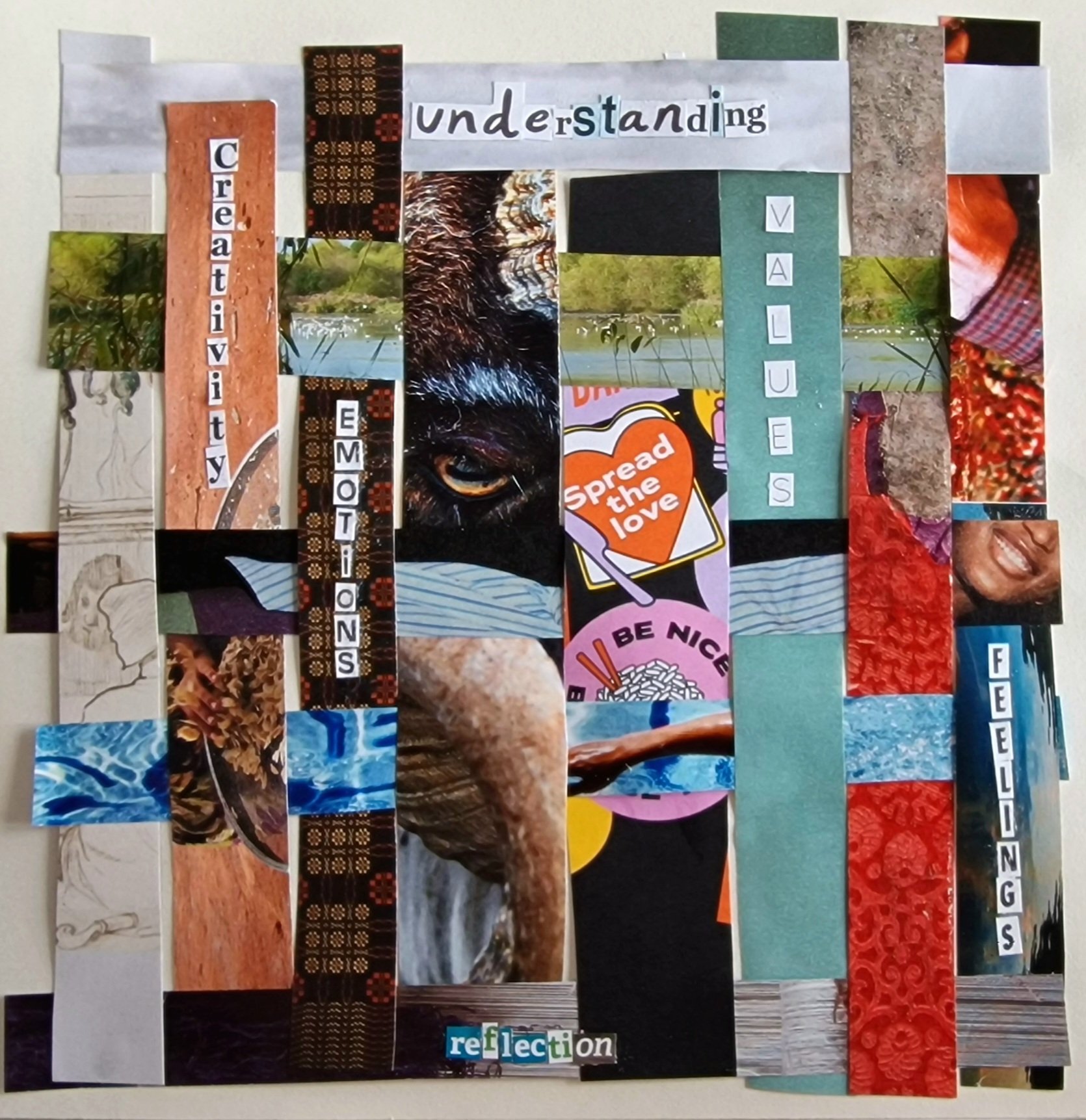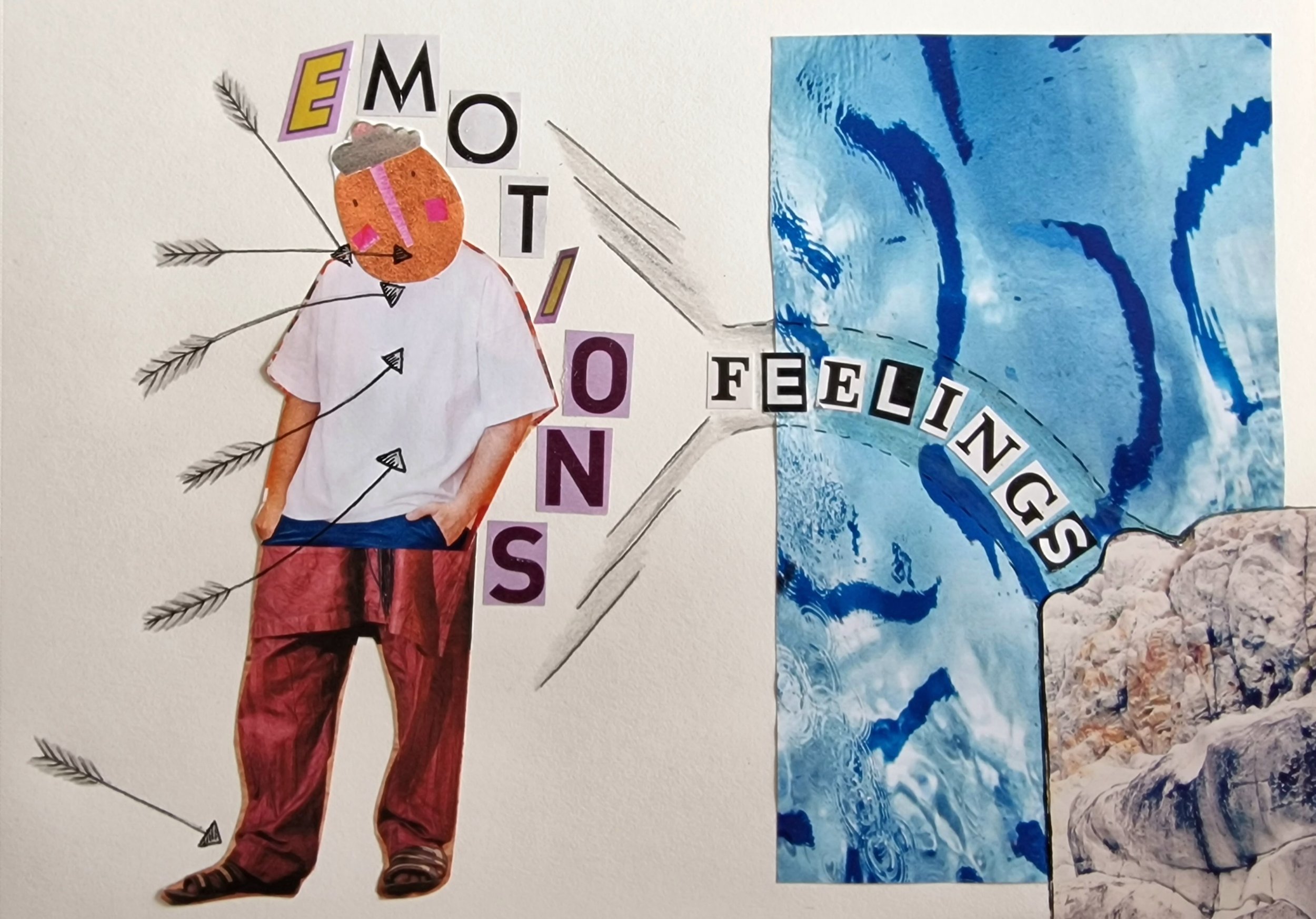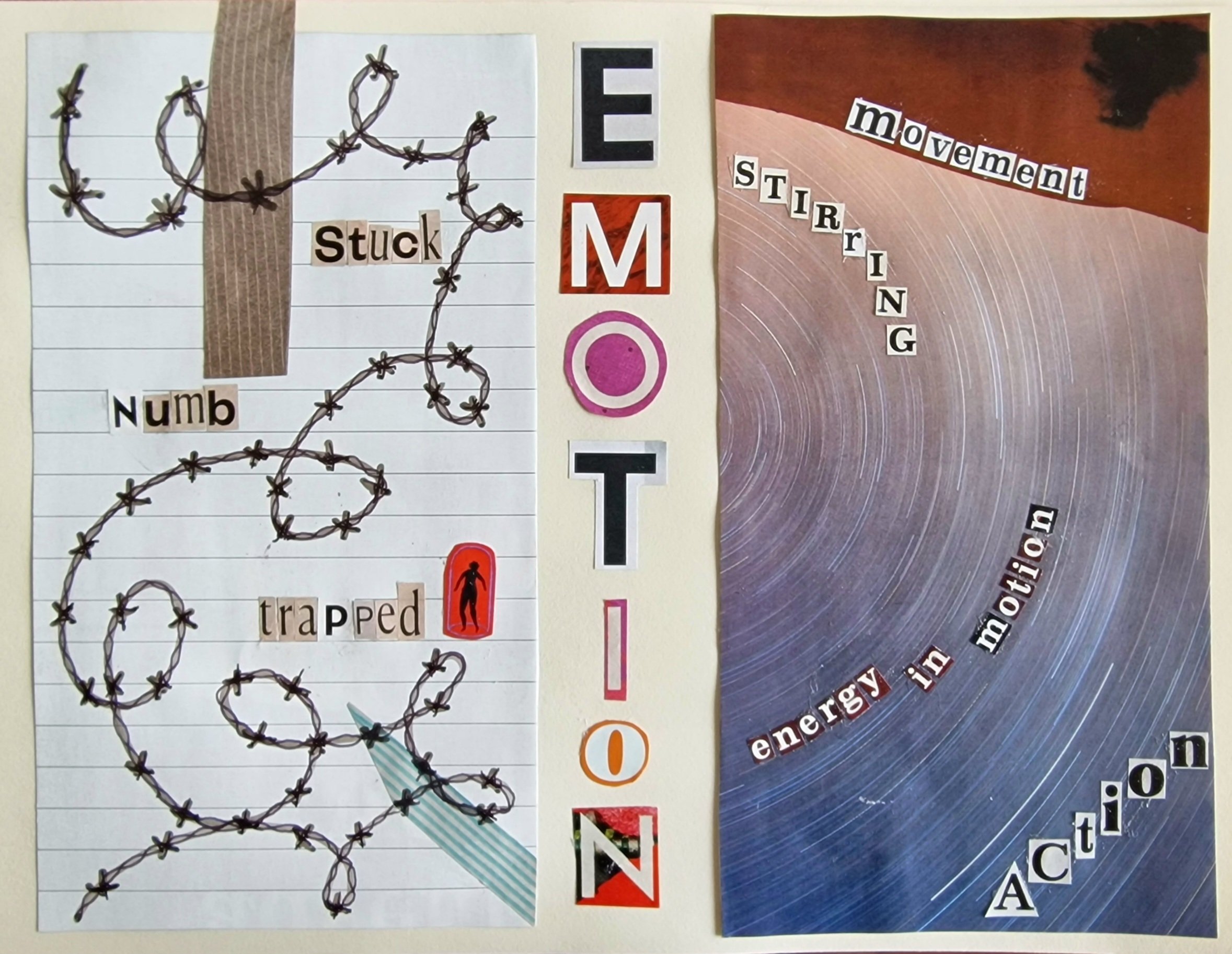Starting with an emotional thread
If we are to weave a new picture of human potential, what threads will we select and how will we weave them together? If emotional sustainability is one of those human threads, what does it look like? This is what I recently explored in conversation with eco-social innovator Rijul Narwal.
If you prefer to watch or listen, you can find our conversation here.
Rijul and I met through our shared work and interest in emotional sustainability. We began our conversation by sharing how we both came to be interested in emotional sustainability, and immediately found some common threads. We have both experienced periods of particular emotional challenge, involving moving countries. We both completed Masters courses at University of the Arts London. We both wanted to talk to other people during our research about seemingly complex, or less frequently spoken about topics. During my research I was finding it hard to talk to people about their values, whilst Rijul experienced challenges talking to people about their emotions.Overcoming these challenges required us to design creative interventions that helped people create and share their own meaning, through creative processes and conversations.
Creativity is an essential thread in our picture of human potential. By working with creative facilitation and communication, and a design-thinking approach, Rijul and I were both able to create spaces and processes that allowed people to begin to connect with and understand their emotions, values and actions in new ways. If we are seeking a new picture of human potential, it is of course vital that we create new ways of thinking about and doing things for the picture to emerge.
The thread of emotion also requires us to examine how we currently talk about emotions, or what we have understood them to be from our culture or society? As Rijul shared during our conversation, she comes from a culture in India where emotions are often seen as weakness. A perspective that feels familiar within most of UK culture as well. Whilst understanding how that perspective has been formed over time in human history was too complex to explore within our conversation, we did discuss the important distinction between emotions and feelings as presented in the work of neurologist of emotions, Antonio Damasio. He defines emotions as a conscious or unconscious physiological response in the body. These responses are fleeting; they do not last for a long time. This physiological sensation could be anything - a racing heartbeat, a sick feeling in the stomach, an excited tingling sensation, tensing of muscles. These emotional, physiological reactions can be seen as important information signals. Signals from a source of bodily intelligence.
The important distinction comes when we look at the difference between emotions, these physiological reactions in our bodies, and feelings. Our feelings are the conscious or unconscious experience of emotional reactions. They last longer, come after emotions, and are more connected to our thoughts. Feelings are much harder to understand because they become so intertwined in our internal systems; in our ability to understand how our past experiences, education, culture, families, etc shape our understanding and perception of ourselves in relation to others and the world around us.
The first thread of emotional sustainability is the ability to become aware of and understand our own emotions better, consciously recognise how our emotions affect our feelings and in turn help to form the values, beliefs and motivations that help give us strength and security in ourselves.
Our tip for starting with an emotional check-in
As well as asking someone or a group of people, “how are you feeling?”, try also extending this question to ask them, “if that feeling was a living or non-living entity, what would it be?” This allows people to connect with and express their feelings in different ways that provide more meaning and understanding to themselves and the people they are communicating with.
Energy in motion - connecting to what is important
My work with emotional sustainability began with an inquiry into values. Values are a very strong thread in the new picture of human potential, and something that I continue to weave into my work as a facilitator. I shared with Rijul that I bring values into workshops because I recognise that in spaces where we need to bring people together, values and emotions allow us to understand each other on the level of common humanity. When we are invited to share how we are feeling, and what values are important to us and why, we can start connecting and building trusted relationships because we recognise those things in others in ourselves.
It is clear that Rijul feels similarly; that connecting with emotions can also help us understand and communicate what is important to us. She shared that her emotions give her the passion, energy and enthusiasm to explore her work. Rijul explained how working with emotional sustainability helped her acknowledge her biases and why they are there, and then use them to inform her design approach. I was particularly struck by Rijul’s insight into how emotional sustainability can reduce conflict in groups as this is something I have also witnessed in my own facilitation practice; “If we could practise emotional first aid people wouldn't have as much friction between differences of opinions, often people have aligned values but differences of opinions.”
Understanding is clearly an important thread in our new picture of human potential. This thread is about how we understand ourselves and others, which is often made possible by sharing our emotions and values, as indicators of what is important to us and why.
Rijul and I both share a love of etymology, and during our conversation we reflected on the root meaning of the word emotion - a stirring, moving, agitation, energy in motion. It became clear during our conversation that by working with our emotions, we can create motivation, movement and action. Whilst we may have been taught to suppress or turn away from the more difficult emotions, it is only by facing them that we can create the energy to move with them and through them. As Marshall Rosenberg, creator of nonviolent communication said, “all feelings are an expression of life.” We invite all emotions and feelings to be present as threads in our new picture of human potential, as that potential requires all humans to feel fully alive.
The second thread of emotional sustainability is to discover our passions and our purpose in order to fulfil our unique potential and contribute it to an interrelated and interdependent global society and natural world. To become active, not passive.
Our tip for reflecting on emotions
You might be familiar with the phrase “sit with your emotions.” Whilst it is important to acknowledge, examine and make space for emotions and feelings, it is not always necessary to come to stillness in your body. Next time you feel a challenging emotion try going for a walk or dancing at home to let your body help you process that emotion…the mind can’t do it alone!
Experiential learning and creative reflection
To close our conversation exploring emotional sustainability I asked Rijul to share one thing that might be of value to listeners. She shared that the ability to be able to reflect goes a very long way. For me the ability to reflect requires being able to see all the threads individually - my thoughts, feelings, values, actions - know that they are all connected, and to be able to understand those connections in a way that creates meaning and actionable learning or change.
Reflecting allows us to integrate new information and perspectives into our understanding. Reflecting on my conversation with Rijul, I am feeling a renewed sense of focus on why we need to continue to reframe our emotions as sources of intelligence and catalysts for positive and collective action. We are living in increasingly challenging times. As challenging as the world currently is, we can’t turn off our emotions. Emotions are part of what makes us human and alive. And right now we need to be fully alive, to be able to work together and face our shared challenges.
The threads of emotions, feelings, creativity, values, understanding, and reflection are just some of the many threads we need to weave back together for people. We would love to know what threads you would weave into a beautiful new picture of human potential.
The third thread of emotional sustainability is to embrace our creativity and engage in dialogue with others to create shared meaning and positive relationships, that will unite us with equality and give us the optimism, drive and shared innovation needed for us to bring about peace amongst humans and secure the preservation of our precious planet.
We have collated a selection of resources related to the themes we discussed in this conversation. For any further information or questions related to emotional sustainability please get in touch at jessica@creatingmeaning.club.
Jessica’s work on emotional sustainability
Rijul’s work on emotional sustainability
Practical philosophy course
To find out more about values and why they matter
To learn more about how infinite growth and measuring progress by GDP doesn't work
To connect with your feelings and needs and learn more about Nonviolent communication
and language of feelings and needs
To use an empathy map as a tool for insights
For a creative idea for understanding systems thinking
To explore the inner development goals framework
To learn more about creative education Masters programmes at UAL




